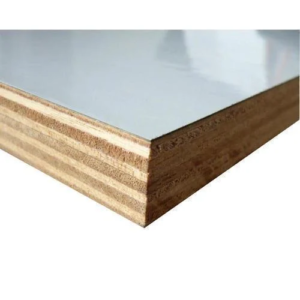Hardwood, Plywood, Veneer & Laminates: A Comprehensive Guide
Introduction to Hardwood, Plywood, Veneer & Laminates
Hardwood, plywood, veneer, and laminates are essential materials in furniture making, construction, and interior design. These materials offer durability, aesthetic appeal, and structural strength, making them popular choices in various applications.
Hardwood: Definition & Characteristics
Hardwood is derived from deciduous trees like oak, teak, mahogany, and maple. It is known for its durability, strength, and natural beauty.
Benefits of Hardwood
- Durability: Long-lasting and resistant to wear.
- Aesthetic Appeal: Rich texture and grain patterns enhance the look of furniture and flooring.
- High Strength: Ideal for load-bearing structures and high-traffic areas.
- Sustainability: Can be sourced from responsibly managed forests.
- Customizability: Can be stained, polished, or carved for various designs.
Applications of Hardwood
- Furniture Making: Used for cabinets, tables, and chairs.
- Flooring: Popular for residential and commercial spaces.
- Doors & Windows: Provides strength and durability.
- Musical Instruments: Used in pianos, guitars, and violins.
Plywood: Definition & Characteristics
Plywood is a manufactured wood product made by gluing multiple thin layers (plies) of wood together. It provides strength and flexibility while being more cost-effective than solid wood.
Benefits of Plywood
- Strength & Stability: Layers of veneer increase durability.
- Lightweight: Easier to transport and install.
- Moisture Resistance: Marine-grade plywood is ideal for damp environments.
- Cost-Effective: Provides a budget-friendly alternative to solid wood.
- Versatility: Available in various thicknesses and grades.
Applications of Plywood
- Furniture & Cabinetry: Used in modular kitchens, wardrobes, and office furniture.
- Construction: Used for formwork, roofing, and walls.
- Partitions & Paneling: Enhances interior aesthetics.
- Packaging Industry: Used for crates and boxes.
Veneer: Definition & Characteristics
Veneer is a thin layer of natural wood applied to a substrate such as plywood or MDF. It offers the appearance of solid wood while being more economical.
Benefits of Veneer
- Cost-Effective: Provides the look of solid wood at a lower cost.
- Eco-Friendly: Uses less wood compared to hardwood furniture.
- Flexibility in Design: Available in various grains and finishes.
- Durability: Resistant to warping and cracking.
Applications of Veneer
- Luxury Furniture: Used for high-end interiors.
- Wall Paneling: Enhances office and home interiors.
- Doors & Cabinets: Adds a premium finish to furniture.
- Automobile Interiors: Used in luxury car dashboards.
Laminates: Definition & Characteristics
Laminates are synthetic materials made by compressing layers of paper and resin under high pressure. They are used as decorative surfaces for furniture and walls.
Benefits of Laminates
- Wide Range of Designs: Available in various colors, textures, and finishes.
- Scratch & Stain Resistant: Ideal for high-traffic areas.
- Easy Maintenance: Requires minimal cleaning and upkeep.
- Affordable: More economical than veneers and hardwood.
- Moisture & Heat Resistance: Suitable for kitchen and bathroom applications.
Applications of Laminates
- Countertops & Kitchen Cabinets: Provides a durable, stylish finish.
- Wall Cladding & Paneling: Enhances aesthetics in commercial spaces.
- Furniture Surface Coating: Protects against damage and wear.
- Flooring: Used as an alternative to tiles or hardwood.
Factors to Consider When Choosing Hardwood, Plywood, Veneer & Laminates
- Application: Select the right material based on usage and durability needs.
- Moisture Resistance: Consider waterproof plywood or laminates for kitchens and bathrooms.
- Aesthetic Appeal: Choose textures and finishes that match your interior style.
- Budget: Hardwood is premium, while laminates and plywood offer cost-effective solutions.
- Maintenance Requirements: Some materials require regular polishing, while others are maintenance-free.
Frequently Asked Questions (FAQs)
1. What is the main difference between plywood and hardwood?
Hardwood is solid wood from natural trees, while plywood is engineered by gluing multiple layers of wood veneer.
2. Is veneer better than laminate?
Veneer offers a natural wood look and feel, while laminates are more durable and resistant to moisture and scratches.
3. Which is the best material for kitchen cabinets?
Plywood with laminate or veneer finishing is ideal due to its strength and moisture resistance.
4. How do I maintain hardwood furniture?
Regular dusting, polishing, and avoiding moisture exposure will extend its life.
5. Is marine plywood waterproof?
Yes, marine plywood is designed for water-resistant applications and is commonly used in bathrooms and boats.
6. Can laminate be used for flooring?
Yes, laminate flooring is a popular choice due to its affordability, durability, and ease of maintenance.
7. What are the advantages of using veneer?
Veneer provides the aesthetics of natural wood at a lower cost and is more sustainable.
8. Are laminates heat-resistant?
High-pressure laminates (HPL) have better heat resistance, making them suitable for kitchens.
Conclusion
Hardwood, plywood, veneer, and laminates each have unique properties that make them suitable for different applications. Understanding their advantages, costs, and maintenance needs can help you make an informed decision when selecting materials for furniture, flooring, and interior design.


































